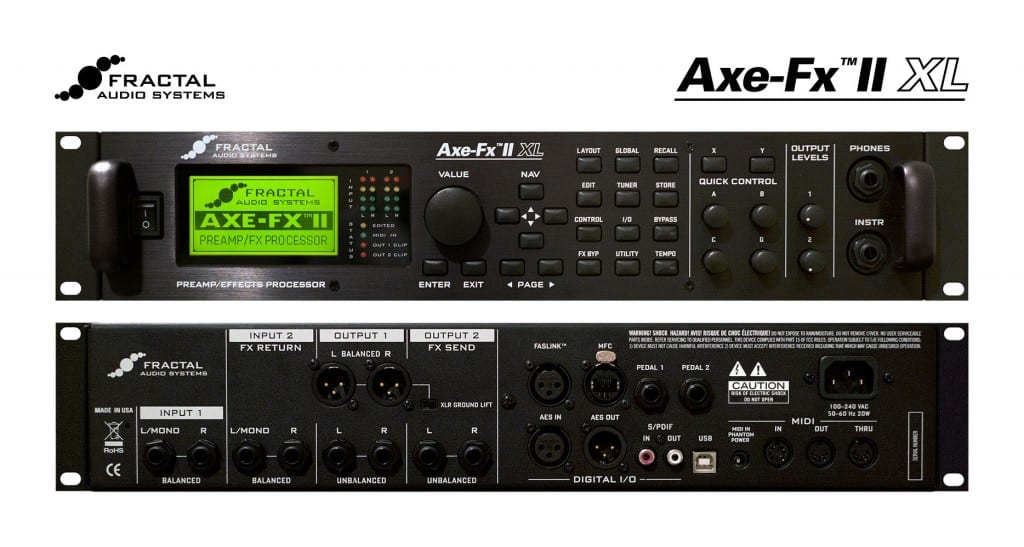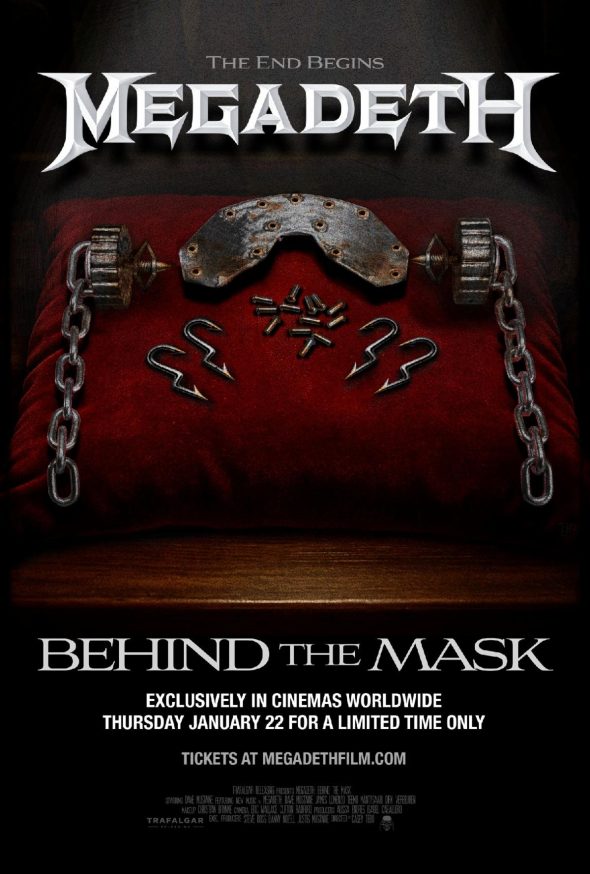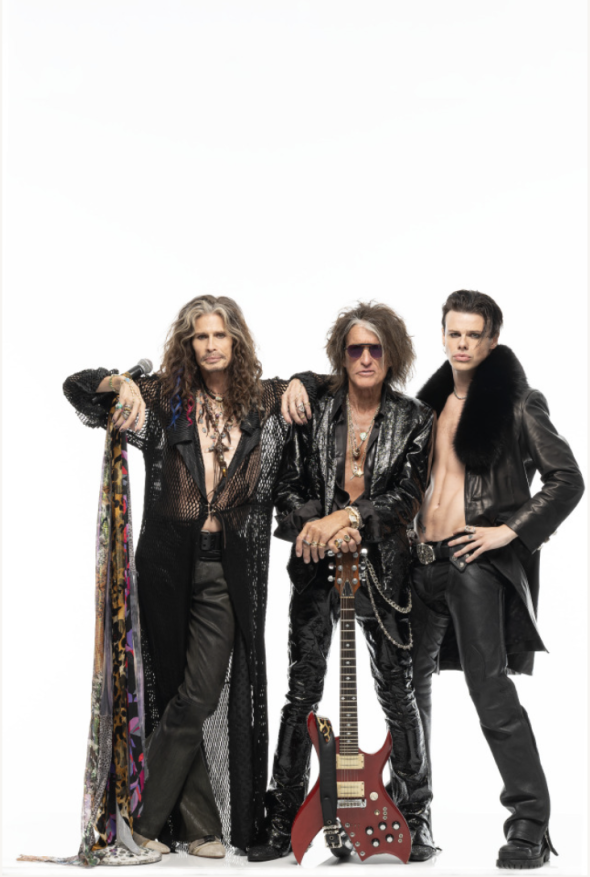Unlocking Sonic Boundaries AND MORE
The past year has been all about reducing size. I’ve been eliminating larger amplifiers and 4×12 cabs from weekly gigs while also striving to improve on tone delivery and flexibility in a smaller package. The quest for the Holy Grail of Tone is never ending, some make it rather simple where others its a much more technical matter.
As always fads come, go, then return with a technology face lift evolving from what we find as cool or driven by a special need. With the constant rise for shipping or airfare rates charging more for check in or carry on luggage, gasoline and downsizing to one band van with back-lines provided, this finds many bands embracing a “less is better” approach from a small local level to the grand scale of Metallica saving HUGE amounts in tour shipping costs by putting Fractal Audio to work as a big part of their touring rigs. Not only are they ripping guitar rigs but they are equally a killer bass rig.
Fractal Audio having built its family tree starting with the
1. Axe-Fx Standard – Adopted by Dweezil Zappa, who led the charge among seasoned pros.
2. Axe-Fx Ultra – capturing the attention of Periphery, Tosin Abasi, John Petrucci, SteveVai, Neal Schon and many more
3. Axe-Fx II
4. Axe-Fx II Mark II, – Brought to the table a whole new crop of artists including Alex Lifeson, Guthrie Govan, Deftones and more.
5. Axe-Fx II XL “NEW” as of March 2014
Having gained attention by numerous recording touring artists not only for how well they travel but most will boast more about what they offer in the studio to dial in on tones often during mix down via re-amping so you can tweak in the exact tone desired during mixing instead of being stuck with what you tracked with a traditional amplifier.
So at a time when pedal boards have been getting bigger and bigger with the market flooded with stomp pedals and boutique amplifiers Fractal brings to the stage a very compact tidy package, 2 rack space Axe FX with the MFC 101 Mark III MIDI Foot Controller which fits excellent on the Pedal Train 2 board with gig bag tote. Pack the Axe FX (+ power amp and wireless) into a Road Runner 4 space soft rack with laptop space/ built in dolly and your breezin thru airline check-in as carry on.
Editing – The software for computer based editing is a breeze to work with allowing easy dragging of amps and effects known as “Blocks”. Editing at the unit itself is pretty user friendly to find what ya need with minimal navigational buttons to keep it fast and to the point. What I truly dig is the way they setup a patch, not only is the signal patch very clear like a flow chart but for every Patch there are 8 scenes. Also there is a X/Y or can be referred to as an A/B state for every item in your signal chain. Each scene saves the On/Off status of effects being used but also the X/Y status of each block. This allows you to manipulate say channel switching of an amp, different delay times, reverb size, EQ curve etc…. Plus with the addition of some Expression Pedals you can control even more parameters with your feet for wah-wah, volume, effects levels, drive, a slew of options. I loved how the wah-wah auto turns on when moved, then off when returned to the heel position, no button required to turn it on which is a feature I loved about many Morley wah’s like the Steve Vai Bad Horsie.
And if all of this isn’t quite enough for you over indulging knob tweaker’s of course you have the ability to use two amps and effects chains at the same time, sending the PA a mix that is different then your stage rig both being stereo feeds. Tweaking, altering, controlling anything to pretty much your imagination. You could even mic your stage rig to add to the overall tonal palette with different amp and effect settings. You can dig deep inside any effect, amplifier, cabinet, far beyond the originals functional abilities.
Tone Matching is a feature Fractal includes which has been getting high praise over that of say the Kemper amps in the same tone capture category. You simply call up a close amplifier patch to what you want to clone then feeding a pre recorded signal into the unit which then reviews/analyzes the audio and alters the amp model you had selected to sound as close as possible to what you Tone Matched. You can actually make a personal library of all your favorite amplifiers and speaker cabinets with an online users group that’s sharing presets from local Joe’s to big time Pro’s. In a cover band or just love a certain artists tone? Search a song name to artist and you just may find something to get you in the arena then dial in the details on the fly.
Setup – Think about how you assemble your tone and other pieces of gear you feed a signal to, say for example most people will plug into the PA system via the XLR outputs and also to a traditional amplifier for your stage amp. In this situation both signal paths to PA and Stage Amp would basically be identical with consideration taken in what type of power amp you are using, a solid state or tube power amp? If a solid state you will still want to use the power amp sag settings to emulate that of any tube amplifiers you call up. Or if your sending a signal to a tube power amp you may choose to disable the power amp sag turning it down till it says PA, or as in my case I like it at .08 which is the lowest it will allow you to set it and remain on and I find it just sounds fuller running small 1×12 VHT cabs with a 22 or 50 watt tube power amp. I am currently running it thru both the PA and stage amp, which does sound great but I am looking forward to some new experiments with Matrix and Atomic amplification both heavily targeting light weight power amps and FRFR speakers.
Speaker cabinet modeling is an important tool to help dial in a perfect PA tone, but on stage if your sending a signal to a normal guitar speaker cabinet you will want to remove any speaker block in the signal chain being sent to that stage amp because a traditional speaker cabinet adds color. This leads us into FRFR or “Full Range Flat Response”. In order to get the most out of cabinet modeling you may prefer sending a signal to a full range speaker like a PA speaker. Although most guitar players don’t want to use a speaker cabinet that looks like a PA speaker so a few companies are developing FRFR guitar cabs and yes they have a tweeter. What this does is when you call up any speaker cabinet sample a FRFR speaker recreates that emulated cabinet best as possible.
UltraRes – With new approaches in how the signal takes shape is being called “Impulse Response” which is defined as: “An IR (Impulse Response) is a sampling of how sound behaves with a given thing.” UltraRes gives better IR performance without added latency or CPU usage. Also not only are we capturing IR from amplifiers but also from speaker cabinets, microphones and the rooms themselves in which they are recorded. The endless selections cabs, mics and placement AND MORE!
Simple edit notes, watch the LED’s for input/out levels and do not let the outputs clip. I highly suggest do all your volume level editing from the amplifier block and not from the master output section, this allows for faster editing as you balance your levels between patches. I keep an EQ at the end of the chain for solo boosting, EQ is set flat and I use a 4 to 6 db boost depending if its a single or dual guitar player gig.
The new Axe FX II XL boasts much more processor horsepower and a slew of improvements with slightly lower noise floor levels with room for expansion in future updates. Metal heads will smile HUGE as their heads bang long into the night, you can get a ridiculous amount of gain far more than any typical guitar amp and still have it remain tight and controllable with the very intelligent noise gates. Some web comments about earlier models noted having problems getting singing feedback, not a problem with the XL this baby sings like a bird and very touch sensitive, in the right setting you would swear there were tubes in there plus its always predictable you get the same tone every time when you need it most. But no fear the cleans are stunning as well as plenty of boutique amps to reference for any tone desired.
The Looper is rather interesting what I found cool was you can record a loop and save it to the patch and it stays there until the unit is powered down. I would love to see them add some Flash Memory storage as a future revision so you could call up a library of perfect loops ready any time needed which would be very useful for a single guitarist.
Amps and Cabs – I am very impressed with the long list of amps vintage to modern and everything in between, clean to down right mean, the list of high profile artists switching to Fractal is impressive and even more what they are saying about it. For players with In Ear Monitors they find it a jewel of a tool. Another new feature to the XL is a XLR jack they call a “FASLINK Port” for communicating with the MFC foot control. Prior versions were all CAT5 which is still there but if you break or lose a CAT5 cable your going to be scrambling to replace it where every sound man has XLR cables to save the day. There is a FASLINK Adapter available so all AXE FX II or MFC owners can get in on the upgrade.
There are extra Cab Packs or Cab-Lab that can be purchased as add-on’s from a few different suppliers found on their website for fast download developed by guys with some nice studios and a lot of quality gear to sample. Cabs make a massive change in the tonal delivery, room environment etc… Cab-Lab allows up to 8 cabs to be mixed together and saved as a unique Cab model.
The MFC-101 Mark III pedal board morphs easily from simple bank/patch changes to Reveal mode which opens you up to the Patch Scenes that are saved, plus effects lit red/green to show status and you can toggle them on/off anytime you wish. All the features you would expect or need from tempo tapping, tuner, 4 extra switching jacks to control amplifiers or other, plus the ability to use 4 Expression pedals for real time control of various parameters.
Updates – When firmware updates become available they target a large variety of bug fixes with improvements on amps, effects etc … Never update just before a gig, wait till you have time to audition your patches as some levels or mixes may change.
In summary I have used Line6 HD POD’s, Positive Grids JamUp iOS system, MIDI tube preamp’s and Eventide rack effects, etc … The Fractal is by far the most versatile tool I have used yet, creating a sonically wonderful, inspiring piece of gear. Just be prepared to spend some time dialing in some patches and even though you will create a great tone quickly, you may find the tweaking as endless as the pursuit for the ultimate new tones. Read those manuals and play with those knobs. I have to feel that any player making this gear move will remain pretty satisfied for a long while to come, or until you need the next Fractal.
Future of Fractal?
Matt Picone comments: More! We’re always thinking and improving… not only of ways to evolve our current products, and also about totally new products—products with cool and innovative new sounds, products at different price levels, products with totally new paradigms… Artists, players and the press have had extremely high praise for the Axe-Fx and its companion products, and we’re very grateful for the incredible reception. This success has granted us the chance to start to realize some of what comes next. We’re small. New. Still-hungry. We’re driven by the music and the musicians as well as the science and the potential of new ideas. Our future is infinite. Every day is “just the beginning.” I guess that’s why I for one am guilty of massively over-using the phrase “and more!” to describe whatever we’re working on at any moment.




